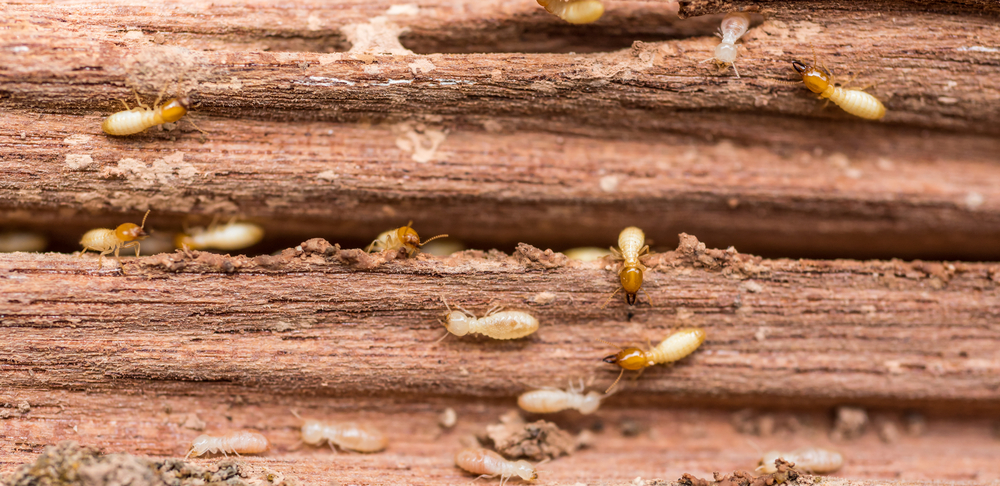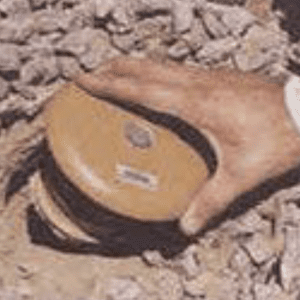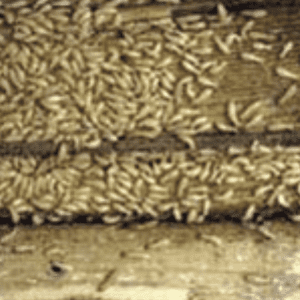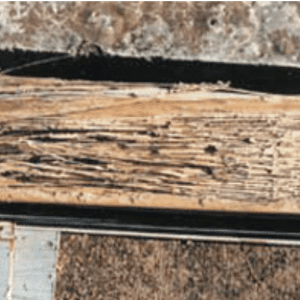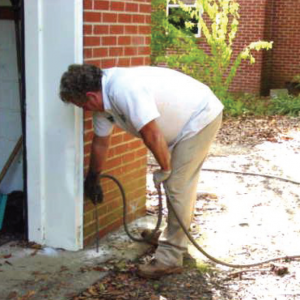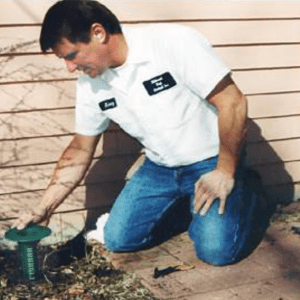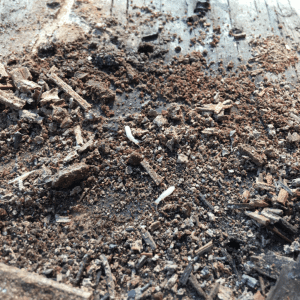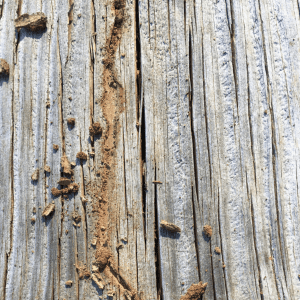Home

There are five types of termite treatment programs: liquid termiticides, baiting systems, wood preservatives, mechanical barriers, and biological termiticides. Learn about the advantages and limitations of each of these five programs. Included are charts demonstrating the properties of non-repellent termiticides, repellent synthetic pyrethriods, and the chemicals found in bait systems.
Termites are the most destructive and costly insects, affecting large numbers of wood structures and causing more than $5 billion in property damage annually in the United States. Meanwhile, termites are one of the most difficult pests to control and prevent. Termite control in homes requires special skills, specialized equipment, and knowledge on both termite biology and building construction. Therefore, termite treatment is better left for certified pest control professionals. A possible exception would be termite infestations in a mailbox, sandbox, or other small wooden object not attached to the house.
There are more control options available today than ever before. In general, there are six types of treatment programs (liquid termiticides, baiting systems, wood preservatives, physical barriers, supplemental barriers, and biological termiticides). Their success depends on professional workmanship. Each year, new products are developed, tested, and made available to users. This publication explains the pros and cons of each type.
Although none of the following products contains a restricted pesticide, most of the products are for professional use.
Do-it-yourself products sold to homeowners at retail stores or bought over the Internet will seldom eradicate an existing termite problem.
Pesticide applicators are required by law to comply with the instructions and directions for use in product labeling.
Liquid Termiticides
Control Concept
Liquid termiticides are used for both pre- and post- construction treatments. Applying liquid termiticide in the ground beneath and around a structure creates a chemical barrier to prevent termites from entering the structure or to kill termites. Homeowners should ask their pest management professionals which product to use and should learn about the active ingredient in the product formulation to understand how the chemical application is designed to work.
Based on chemical activity, there are two groups of termiticides: nonrepellent termiticides and repellent synthetic pyrethriods.
- Worker termites and the damage they can do to untreated building materials
Nonrepellent termiticides kill termites through direct contact while they travel through a treated soil barrier. The control effect is advanced by the chemical’s slow- action property, which allows transfer of the chemicals from contaminated termites to unexposed colony mates. Applying nonrepellent termiticides provides relatively quick protection of a structure and suppresses termite activities around a structure.
Synthetic pyrethroids act as repellents in the soil, and most emit an odor. Termites that encounter these chemicals may turn away and avoid the treated area. Termites will not be killed unless they make contact with the treated barrier. Therefore, a uniform continuous barrier is critical because any gap may provide access to the structure.
Application
Preconstruction Soil Treatment
Before pouring a slab, apply termiticides at a rate of 1 gallon of finished solution per 10 square feet (soil fill) or 1.5 gallons of finished solution per 10 square feet (coarse fill) or as specified in the product label; this creates a horizontal barrier of the fill material that will be covered by the slab. After the slab is poured, apply at a rate of 4 gallons per 10 linear feet per foot of depth to create a vertical barrier in soil backfill areas next to foundation elements such as walls, piers, pipes, slab expansion joints, etc. Hollow masonry units receive 2 gallons per 10 linear feet or as specified in the product label.
Table 1. Termiticides for Soil and Spot Treatment
*Not a substitute for mechanical alteration, soil, or foundation treatment
| Common Name | Class | Trade Name | Company Name (Check company websites for label instructions.) |
|---|---|---|---|
| fipronil | phenyl-pyrazole | Termidor SC Termidor DRY* Termidor H·E (Co-pack) Termidor H·E (Premix) Termidor FOAM* Termidor 80 WG There are several generic fipronil products, such as TaurusTM SC, available on market for termite control. | BASF BASF BASF BASF BASF BASF |
| chlorfenapyr | pyrrole | Phantom Prescription Treatment brand Phantom Pressurized Insecticide* | BASF BASF |
| Chlorantranili-prole | Anthranilic diamide | Altriset | Syngenta professional product |
| dinotefuran | chlorinated nicotine derivative | Prescription Treatment brand Alpine Ant & Termite Foam* | BASF |
| imidacloprid | chlorinated nicotine derivative | PremiseTM 75 WP Premise 2 Premise Foam Premise Granules Premise Pro | BAYER CropScience |
Table 2. Synthetic Pyrethriods
| Common Name | Trade Name | Company Name (Check company websites for label instructions.) |
|---|---|---|
| Acetamiprid-Bifenthrin | Transport termiticide | FMC Professional Solutions |
| bifenthrin | Talstar termiticide/insecticide Bifen I/T Bifen L/P granules | FMC Professional Solutions |
| Cyfluthrin | Prescription Treatment brand CY-KICK CS* Prescription Treatment brand FastOut CS Foam RTU* Tempo SC | BASF Bayer |
| cypermethrin, beta | Prevail FT Cyper EC Cypermethrin TC Demon Probuild TC | FMC Group |
| deltamethrin | D-Foam | |
| permethrin | Dragnet FT Permethrin TC Prelude termiticide | |
| λ-Cyhalothrin | Prescription Treatment brand 221L* Prescription Treatment brand CYHALOCAP CS | BASF BASF |
| Natural Pyrethrins | ||
| Natural Pyrethrins (synergized) + Silica Dioxide | Prescription Treatment brand TRI-DIE Pressurized* | BASF |
| Natural Pyrethrins (synergized) + Silica Dioxide | Prescription Treatment brand TRI-DIE Dust* | BASF |
| Botanical Oils | ||
| Geraniol Lemongrass Oil | MotherEarth Exempt* | BASF |
| d-Limonene | MotherEarth ProCitra- DL* | BASF |
Postconstruction Soil Treatment
For a house with slab-on-ground and foundation elements, use a trench-and-drench method along the exterior foundation from grade to the top of the footing to create a perimeter barrier. Trench must be a minimum of 6 inches deep and 4 inches wide. Apply at the rate of 4 gallons finished solution per 10 linear feet per foot of depth. Where necessary, substitute rodding for drenching.
To treat soil under slab or concrete or to treat termites inside walls, drill holes through slab, foundation, walls, or along concrete expansion joints vertically or horizontally in intervals of 1 foot or less and inject liquid termiticide at the same rate or as specified in the product label. Treat soil beneath bath trap by rodding or drenching at a rate of about 4 gallons of finished solution per square foot. For basement and inaccessible crawl space construction, apply at the same rate from grade to the top of the footing or at a minimum depth of 4 feet.
For accessible crawl space construction, trench and rod the soil around the foundation and all piers and pipes at the same rate from grade to the top of the footing.
Treat the existing interior termite activity site and extend the treatment for at least 2 feet in two or more directions radiating from the site by injecting or foaming or as specified in the product label.
Advantages
- A relatively quick control of termites and protection of the treated structure.
- Low maintenance.
- Relatively inexpensive.
Disadvantages
- Application (trenching, drilling, injecting, foaming) is sometimes intrusive and messy.
- Synthetic pyrethroids not recommended for application within 50 feet of a body of water, well, or cistern.
Table 3. Termite Baiting System
| Common Name | Active Ingredient | Class | Company Name (Check company websites for label instructions.) |
|---|---|---|---|
| Sentricon | noviflumuron | Insect growth inhibitor (IGI) | Dow AgroSciences |
| Exterra Termite Interception and Baiting System | diflubenzuron | Insect growth regulator (IGR) | Ensystex, Inc. |
| Prescription Treatment brand ADVANCE Compressed Termite Bait II | diflubenzuron | Insect growth regulator (IGR) | BASF |
| FirstLine Termite Defense System | Befenthrin | Synthetic pyrethriod | FMC Corporation |
Bait Systems
Control Concept
Instead of applying a chemical barrier designed to exclude termites from a food source, termites are offered food in the form of baits. Treatment baits have two components: a termite food source and a slow- acting termiticide, such as an insect growth regulator (IGR). Termites feeding on the bait are not killed immediately, so they have time to recruit nest mates to the bait and to pass the termiticide to other colony members, ultimately leading to the decline or perhaps elimination of the colony.
Using baiting systems is an ongoing process that involves monitoring, baiting, and inspecting because no persistent pesticide is applied in the vicinity of a structure. Long-term inspection tracks activity of a new or recovered colony of termites entering previously baited area.
Application
Install plastic stations containing a food source inside in the ground, around the structure, or above ground in the path of termite tunnel or termite-infested wood in the structure. Inspect the stations monthly or quarterly. Replace the food source with a bait after termites are found inside the station. Continue the inspection process as long as the contract between a homeowner and pest control company is effective.
Sentricon HD may be used in lieu of a preconstruction termiticide treatment as a means of preventing termite infestation of new structures. Some baits are applied as stand-alone treatments—they are the sole control method. Others are used in combination with a local or complete liquid treatment.
Advantages
- Environmentally friendly with extremely low toxicity to humans and pets.
- Can be used in situations where infested structure is within 50 feet of a well or 100 feet of a body of water.
- Less intrusive—no drilling or trenching and easy to install.
Disadvantages
- Slower action against termites.
- Expensive because baits must be inspected and serviced at intervals for ongoing prevention and control of termite colonies.
Table 4. Wood Treatment Products
| Active Ingredient | Trade Name | Character | Application (Check company websites for label instructions.) |
|---|---|---|---|
| Disodium Octaborate Tetrahydrate (DOT) = borate | Tim-Bor | Powder | Mix 1 pound Tim-Bor in 1 gallon of water and treat about 200 square feet of wood. Spray, brush, or roll on to the point of runoff. |
| Disodium Octaborate Tetrahydrate (DOT) = borate | Bora-Care | A liquid mixture of DOT and glycol-based components to enhance wood penetration | Mix 1 gallon of Bora-Care with 1 gallon of water and treat up to 800 square feet of wood. Spray, brush, or roll on to the point of runoff. EPA-registered label allows it to be used on wood as a stand- alone two-foot barrier termite pretreatment. |
| Disodium Octaborate Tetrahydrate (DOT) = borate | Jecta Gel | Ready-to-use | |
| Disodium Octaborate Tetrahydrate (DOT) = borate | Armor-Guard | Powder | NovaGuard Technologies, Inc |
| Disodium Octaborate Tetrahydrate (DOT) = borate | Shell-Guard EZ-Bor | Liquid, penetrates into wood deeper than Armor-Guard | |
| Disodium Octaborate Tetrahydrate (DOT) = borate | Term-A-Rid 613 | Treated wood stakes or mulch | Termarid, LLC http://www. termarid.com/ |
| d-Limonene | XT-2000 | Liquid | XT-2000, Inc |
| Thiamethoxam | OptiGard ZT | Liquid or foam as wood injection or void application. | Syngenta |
Wood Preservatives
Control Concept
Wood is treated with a preservative that is toxic or repellent to termites and other wood-destroying organisms.
Application
Liquid preservatives are sprayed or brushed on unfinished wood. They can be used to treat an entire wood structure or to drill and inject infested wood. All borate-based products are water soluble, thus borate- treated wood should be used only interiorly or where the wood is kept free from water and ground contact.
(In addition to the chemicals listed here, most nonrepellent termiticides are also labeled for wood treatment)
Advantages
- Low in mammalian toxicity
- Less expensive
- Long-lasting (for decades) unless exposed to constant rewetting
Disadvantages
- Interior use only due to leaching problem
- May not penetrate to the center of a wood beam
Table 5. Termite Physical Barrier
| Physical Barrier | Trade Name | Character | Registrant (Check company websites for label instructions.) |
|---|---|---|---|
| Plastic barrier | Impasse termite blocker | A termiticide “locked in” between polyethylene plastic sheeting. Example termiticide is lambda cyhalothrin | Syngenta Crop Science |
| Stainless steel mesh barrier | Termi-Mesh | A marine grade 316 stainless steel wire mesh (aperture of 0.66 x 0.44 mm) | Termi-Mesh Australia Pty Ltd. |
| Aluminum | Alterm | Solid 0.5 mm marine grade aluminum | Alterm Pty Ltd |
| Basaltic particle barrier (BTB | Granitgard | Common volcanic rock crushed to particles of 1.6 to 2.5 mm. Installed as a layer of several inches thick below and around the foundation. | GranitGard Pty, Ltd. |
| Sand particle barrier | Graded stone particles of 2.0 to 2.8 mm (roughly 16-grit). Not recommended for all climates or types of con- struction. May combine with termiticide application. |
Termite-proof Materials (Physical or Mechanical Barriers)
Control Concept
Install mechanical barriers and physical barriers before a structure is built to prevent termites from entering the structure and to offer the advantage of indefinite longevity without or less pesticide use.
Two types of termite-proof durable material are available. One is pesticide-free and made of durable materials that are too hard for termites to chew and too tight for termites to pass through. The other contains a termiticide placed between durable polymer layers. Termites are killed when they come in contact with the termiticide.
Application
Termite-proof material is installed before the concrete slab is poured, and it is positioned around utility conduits (plumbing, electrical pipes and wires, and bath trap areas).
Advantages
- Environmentally favorable profiles.
- Durable, long-term solution.
Disadvantages
- Preconstruction use only.
- Use only as a complement to liquid or bait treatments.
Supplemental Barriers
Control Concept
Create form or dust barriers that are used in conjunction with liquid termiticides.
Application
Foam can be created by mixing a termiticide with a foaming agent and applied using a small compressed air-tank. The mixture under pressure forms shaving cream–type foam that expands into drilled voids in walls and under slabs.
Dust termiticide can be applied to wall voids and other space where liquid or foams are impractical.
Download a PDF of Subterranean Termite Control Products for Alabamians, ANR-1252.

